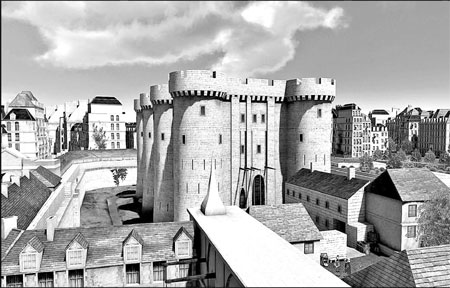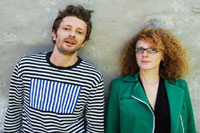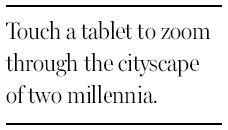 |
|
The Bastille at about the time of the French Revolution is shown in "Paris 3D," a tour of the city through the ages. |
PARIS - In a 1789 painting of the Bastille, the French artist Hubert Robert portrayed that Paris fortress as a huge, seemingly impregnable structure and the Parisian revolutionaries who razed it as small, vulnerable human beings. More than two centuries later, thanks to 3-D modeling software, a different picture of the Bastille emerges. In its recreated setting it is the Bastille that seems small, even vulnerable.
The dimensions of the Bastille are still known, but even one expert on the city's history was taken in by Robert's hyperbole - until he saw the 3-D simulation, which shows the Bastille nestled among surrounding buildings rather than towering over them. Now he sees the fortress, and the painting, in a different light.
 |
"It was pure propaganda," said Jean-Marc Leri, director of the Carnavalet Museum, which is devoted to the history of Paris.
The scale of the Bastille is one of many revelations that emerge from "Paris 3D," an ambitious project by Dassault Systemes, a French software company, in partnership with the Carnavalet, that has created an interactive 3-D, virtual-reality representation of Paris through the ages.
The project includes a book and a documentary on DVD, but its core is the interactive modeling, now available as an application for tablet computers.
With a touch of the screen you can zoom through two millenniums of Parisian development. You can take a virtual dip in the Thermes de Cluny, the Gallo-Roman baths whose remains are now part of a museum in the Latin Quarter, or soar over medieval roofs to see Notre-Dame being built.

"Paris is the most visited city in the world, and one of the best preserved, but it also has all of these lost treasures," said Mehdi Tayoubi, vice president for digital and experiential strategy at Dassault Systemes.
At the company's headquarters in a Paris suburb a more elaborate installation with giant screens lets visitors don headsets that immerse them in the 3-D experience; it reacts to their movements by changing the viewing angle and perspective.
"Paris 3D" follows similar initiatives like "Rome Reborn," a 3-D model of ancient Rome developed by a professor of art history and classics at the University of Virginia, and "Giza 3D," a virtual version of the pyramids at Giza created by Dassault Systemes with Harvard University and the Museum of Fine Arts, Boston.
"Paris 3D" took 20 experts two years to assemble.
Dassault, whose software is more commonly used as a design and industrial research tool, worked with specialists from the Carnavalet and consulted old maps, archaeological drawings and other records.
A few disputes arose - over the color of the paint in the Cluny baths, for instance. In such cases a scientific panel had the final word. Occasionally, as with the depiction of Paris during Neolithic times, some guesswork was involved.
"We worked with what we know today," Mr. Tayoubi said. "If we know more tomorrow, we will work with that."
The New York Times
|
|
|
|
|
|
|
|